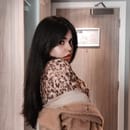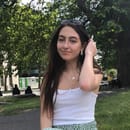For many children and young adults, seeing themselves represented in media means a great deal to them. Think of Disney – when I was growing up there were no princesses with disabilities, and most of the princesses were Caucasian.
For many children of colour, or children with disabilities, they had no one to look up to – they did not see themselves represented in their favourite movies or shows and may have felt there was something wrong with them, that they were not like everyone else. This is no different for those who identify (or are questioning if they do) as LGBTQ+.
The importance regarding the inclusion of LGBTQ+ characters in family shows is not only found in the representation itself for LGBTQ+ people, but it also lies in the power it holds to open the discussion around these topics in families or between friends.
RuPauls Drag Race is a prime example of this, and even if you only watch one episode you will hear about how the show helped younger drag queens realize that they had found an art in their passion, not something they should be ashamed of. This is because the show opened that discussion and presented that representation for those people to see themselves in the queens featured in the show, and enabled them to find that strength within them to pursue this art.
Recently many shows have included LGBTQ+ characters in the main cast, such as Riverdale, American Crime Story, Atypical, Dynasty and Schitts Creek, to name a few.
All of these shows, especially Schitts Creek, include the LGBTQ+ storylines as a main part of the plot, furthering the representation of LGBTQ+ characters in the media today.
Despite this however, one main portion of the LGBTQ+ community appear to still be underrepresented – those who identify as part of the community and are of colour. In 2018, according to a study done by GLAAD (who work to “rewrite the script for LGBTQ+ acceptance”) only 42% of LGBTQ+ characters were of colour, showing that there is still work to be done in representing the racial diversity of these characters.
According to GLAAD, of 110 films released in 2018, only 20 of them featured characters from the LGBTQ+ community, though that is a rise from the previous year, it is still not high enough.
There has recently been an increase in the release of movies surrounding the topic of coming out and navigating the feelings that surround realizing or questioning if you are part of the LGBTQ+ community, with movies such as Love Simon opening that discussion for parents and their children.
Disney have also included LGBTQ+ characters in shows such as Good Luck Charlie, The Princess Diaries 2 and High School Musical: The Musical: The Series, but have promised to continue releasing more shows and movies “with an increased commitment” to representing their diverse audience, saying “we want to represent our audience… to tell stories they want to hear, that reflect their lives”. There is also news that there will be a transgender character in a future Marvel film, with the upcoming superhero movie The Eternals introducing Marvels first openly gay main character.
While these are amazing steps to create a world where everyone is represented, more does need to be done. More LGBTQ+ people of colour need to be included, more princesses and princes need to be a part of that community so young children know it is ok to feel however they are feeling.
I want to end off with this – I watch a youtuber family, The SacconeJolys, and one of their children is a “boy” who likes dressing in girls clothes and has said he feels like he is a girl. The parents are very accepting of it, and only want him to live his life as happy as he can be. I think this is important to mention, as there may be countless young children at home who happen to see their parents watching this family, who may find comfort in knowing there are other boys out there who like to dress in girls clothes without it being a problem, or the other way around.
In a world where kids are constantly on some device and are often found watching YouTube, I believe it is a good thing the family are doing, not hiding that part away from their daily vlogs and instead embracing it and showing it to their many followers, hopefully helping kids across the world realize that it’s okay, while perhaps changing other people’s opinions on the topic to opinions that welcome this diversity.
Media has changed a lot in terms of a wider representation of groups recently, but it needs to continue and increase. Young LGBTQ+ people need this representation so that they know that even if they don’t understand what they are feeling, it is valid and they are not alone.



